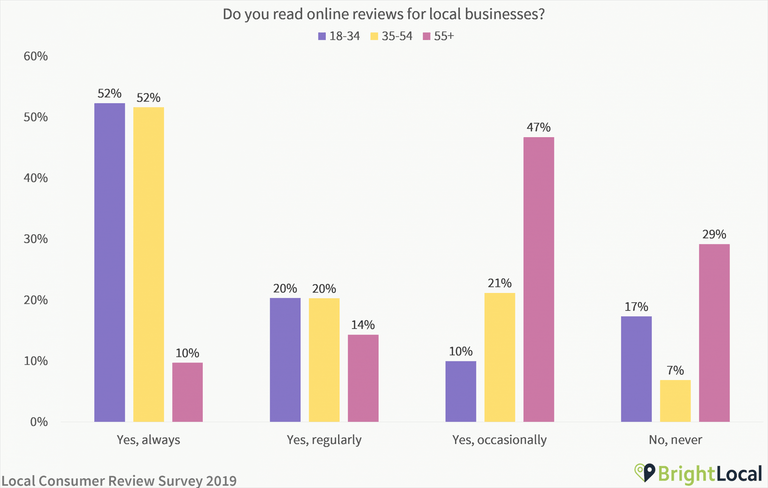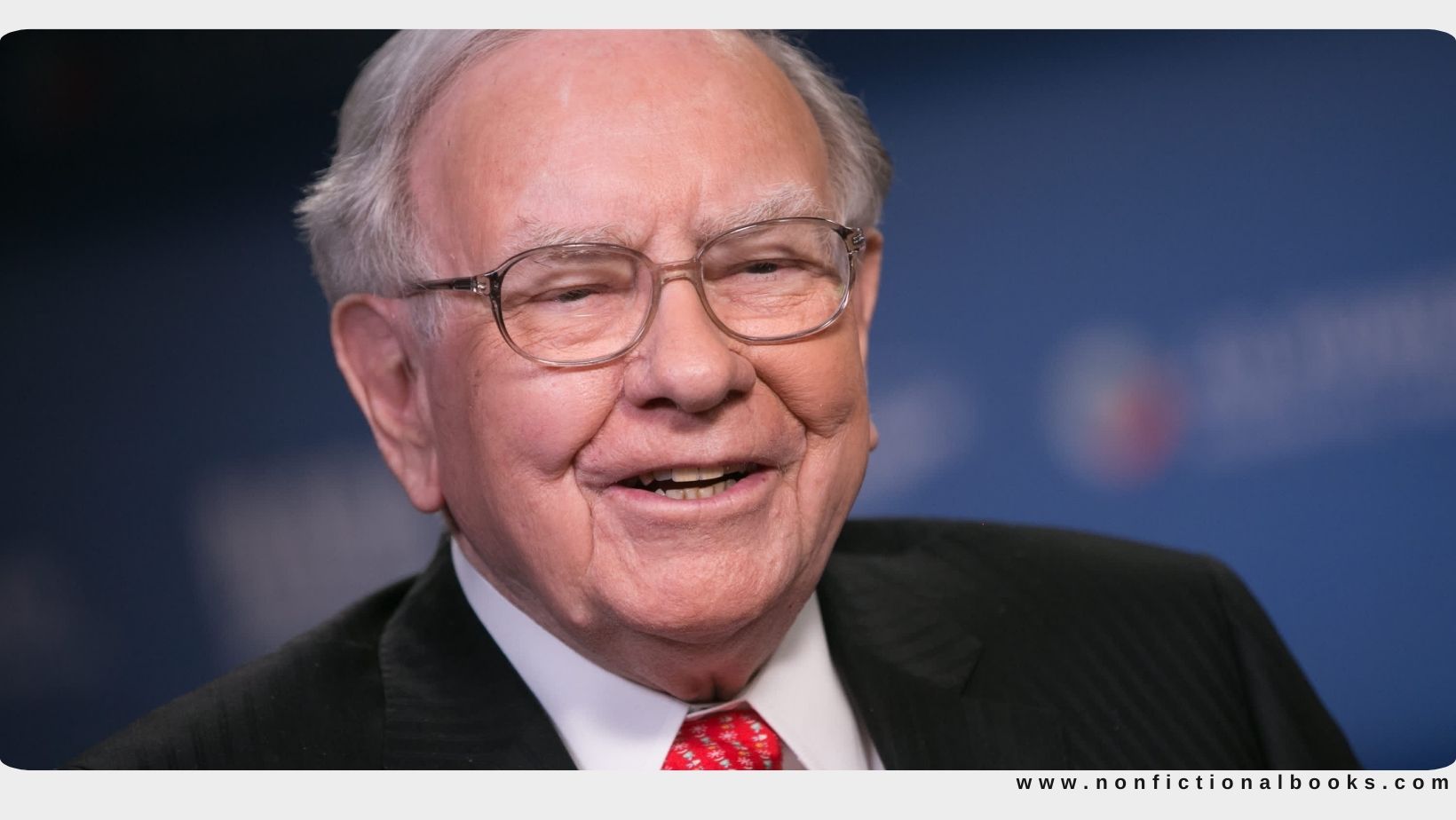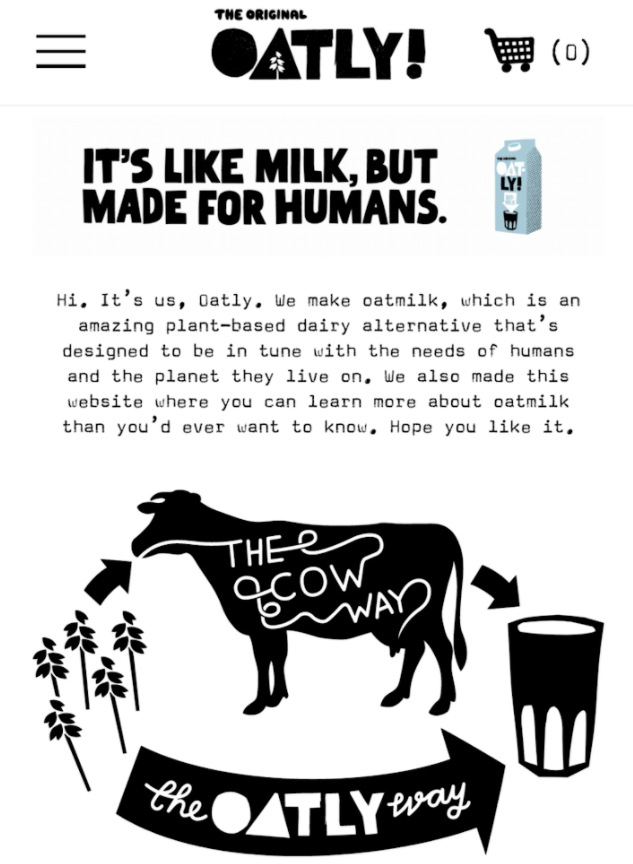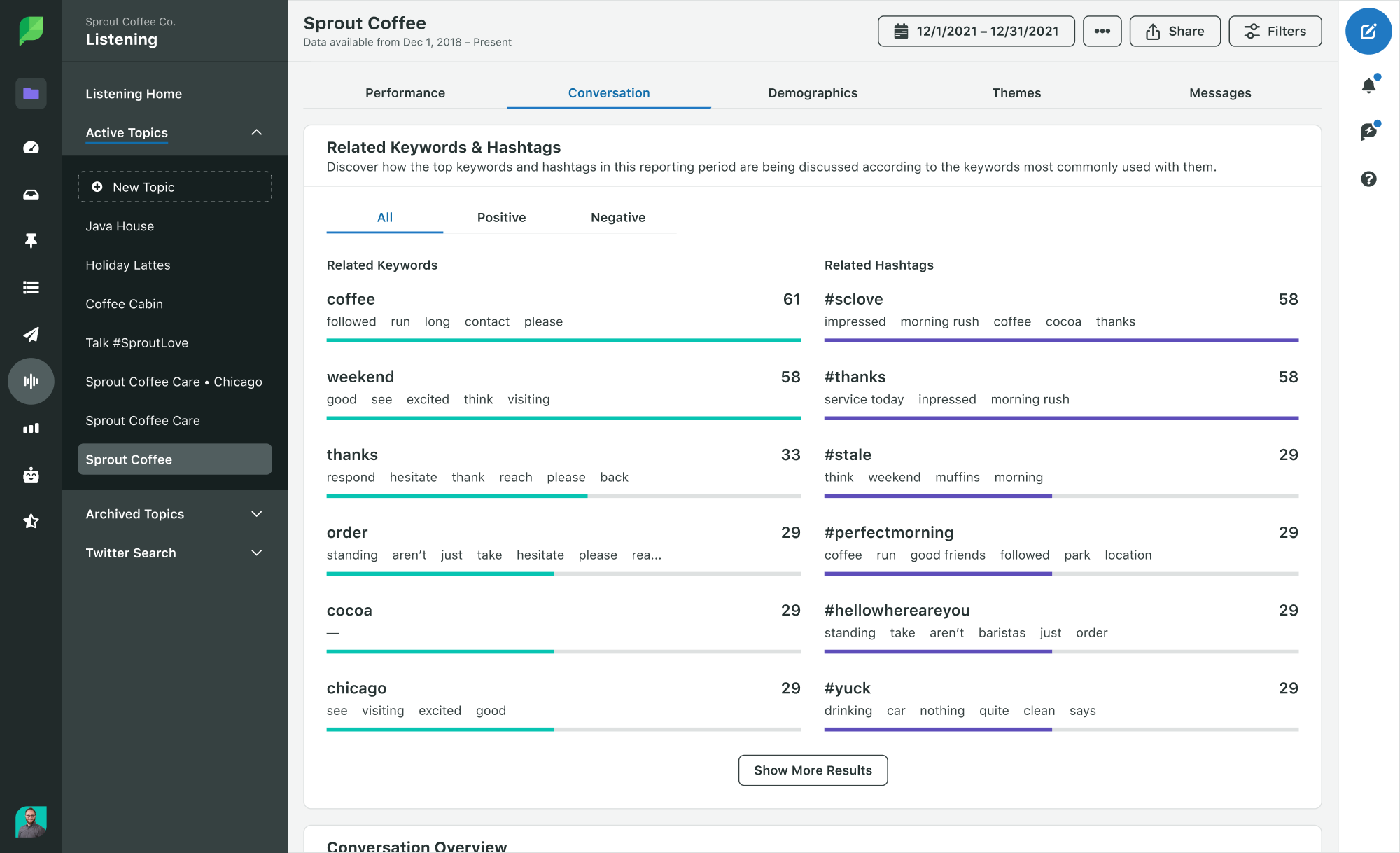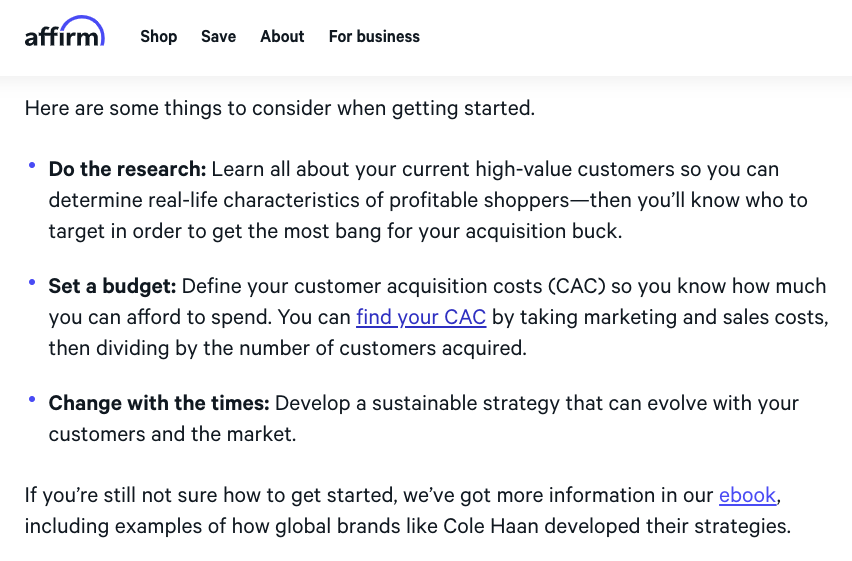Recruiting has changed drastically in the past decade. Businesses must rapidly grow their workforce in an increasingly competitive landscape. In order to attract top talent, social recruiting strategies are pivotal.
The job market is shifting. Not only are companies searching for new skill sets and talents, but the way that businesses find their ideal candidates has turned on its head. In fact, 49% of HR professionals say their organization plans to increase virtual methods of recruitment and candidate engagement.
The question for modern organizations is: how can you make this work to your advantage? As a generation of digital natives enter the workforce and Millennials transition into leadership positions, social media will continue to be an important source for employers sourcing new talent.
Social media recruiting through employee advocacy and referrals could allow companies to tap into brand new spheres of talent. In fact, plenty of businesses have already gotten into the social recruiting game. Nine out of ten brands now use some manner of social media to source, attract and engage their new recruits.
The most effective social recruiting strategiesConsistently engage your social audience5 companies that have mastered the art of social recruitingBuilding an effective employee referral programHow to create a great onboarding planRetention strategies to improve company cultureWhat is social recruiting and does it really work?
Yes, social recruiting works. Social recruiting can serve as a complement to traditional recruiting methods. However, social recruiting is also quickly taking over traditional recruitment as the norm.
Recruiters find that social media allows them to narrow the candidate pool more effectively and quickly find qualified individuals.
When businesses implement social recruiting strategies correctly, they get their brand message across numerous social platforms while showing potential candidates an enticing picture of what their company culture is like. In fact:
96% of job seekers use social media when conducting a job search (CareerArc)49% of professionals follow companies on social media to stay aware of job opportunities (LinkedIn)81% of jobseekers want to see job opportunities posted to Facebook (Link Humans)78% of recruiters expect social media recruiting activities to increase (Jobvite)46% of companies said social media recruiting investments are a focus in 2020 and beyond (Jobvite)Instagram recruiting more than doubled between 2017 and 2020 (Jobvite)Nearly 40 million people search for jobs on LinkedIn each week (LinkedIn)71% of U.S. hiring decision-makers feel that looking at candidates’ social media profiles is an effective way to screen applicants (Express)Why traditional recruiting strategies are no longer enough
Traditional recruiting relied on finding prospective employees in a way that was time consuming and expensive, making them less efficient than social recruiting strategies. While a lot of these methods are still in use, they come with significant disadvantages over a well-formed social recruiting strategy—primarily when it comes to cost.
For example, some job sites charge on a cost-per-click basis, such as between $0.25 – $1.50 per click. This may not seem like much, but if your job posting accumulates 2,000 clicks, costs can add up quickly.
The most effective social recruiting strategies
Social recruiting can be done in both a passive and active manner. It is important to formulate a concrete plan before posting job openings on social media. Below are some social recruiting strategies to get you started.
Determine your goals
The path to success always starts by creating a solid foundation. It’s easy for companies to get tangled up in connecting with candidates through a variety of platforms as you work on your recruitment strategy.
If you start dividing your attention between dozens of sites without any clear ambitions, you’ll be setting yourself up for unnecessary struggle. Instead, make a detailed plan that focuses on the best social media platforms for your ideal candidates, and funnel prospects through a single communication channel.
Today, 92% of employers use social media to hire talent. However, the way you use social media to inform your recruitment strategy can involve several different tactics, such as:
Using LinkedIn to learn more about a candidate’s professional experienceEngaging candidates on Twitter to learn more about their interests and what they value—which also helps gauge culture fitMonitoring Facebook to get a glimpse into how candidates present themselves to strangers, friends and familyPromoting jobs with hashtags on TikTok or Instagram and using these platforms to show audiences what it’s like to work for your companyCreating YouTube videos that showcase your company values and cultureTap into the right platforms
While LinkedIn or Twitter might seem like the obvious place to start your social media recruiting strategy, it’s important to research your ideal candidate profile and consider where they’re most likely to spend their time on social. For instance, a graphic designer might spend more time on visual channels like Instagram or Pinterest, while video editors likely enjoy YouTube and TikTok.
As a result, recruiters must be agile in where they plant their flag to find the most talented and qualified candidates. Finding high-quality employees means tapping into the right platform for the role you’re trying to fill.
Each platform you consider will require a slightly different approach for candidate sourcing. For example, on Twitter you’ll want to incorporate hashtags to join the right conversations and make it easier for your team to reach out to possible referrals. On Facebook, it may be appropriate to visit careers pages and job groups to seek out potential employees.
Update your approach and make applying easy
In the age of remote work and distributed teams, social recruiting has emerged as a powerful solution for companies not just because it gives them access to a wider range of potential applicants, but also because it could simplify the recruitment process. In order to thrive, businesses need to monitor and update their strategies regularly.
Companies are beginning to recognize that strictly posting on job boards won’t cut it. Eighty-six percent of job seekers use social in their search—a number that will only grow as more hyper-connected digital natives enter the workforce. Especially if your company embraces work-from-anywhere policies, you’ll want to take advantage of recruiting that reaches candidates around the world.
One particularly important factor to keep in mind is that your application process should be as intuitive as possible, with as few steps from the social recruiting post to submission as necessary. This might sound obvious, but you may be surprised by how many companies have slow, buggy application processes, or job portals that aren’t mobile-friendly.
Ensure your online presence reflects your brand
A work environment that’s both desirable and reflective of your employer brand will continue to climb the ranks of your future candidates’ list of requirements. Company culture attracts the top 20% of candidates, meaning a strong reputation and positive online presence carries a lot of weight, particularly with passive job seekers. In fact, 75% of active job seekers are likely to apply to a job if the employer actively manages its employer brand.
To develop a more active and positive social media presence, think about your brand manifesto and how you can highlight your people, values and other differentiators. For most companies, this will be about featuring current employees—after all, if you have a strong brand identity, they’ll be your biggest advocates. By showcasing employee stories, team events and other company culture touchpoints through written, audio or visual content, you give candidates a behind-the-scenes glimpse at what they can look forward to should they join your team.
Involve employee advocates
Social recruiting through employee advocacy automatically increases your recruitment reach. Just by sharing job listings on their social profiles, your workforce exponentially boosts your ability to connect with new and diverse talent.
Employee social media content is shared 25 times more frequently than when the same content is shared by brand channels—that’s a wide reach.
The easier it is for your employees to get involved with your social recruiting strategies, the more likely they are to naturally share content on behalf of your brand. After all, 72% of U.S. adults use at least one social media site, and 40% of professionals use social media for business.
True employee advocates will organically spread the word about your company culture and use their own social networks to help fuel your candidate pipeline. If your employees are posting and Tweeting about how amazing it is to work for you, it will naturally draw a bigger audience to not only your recruitment efforts but also your overall presence online.
Potential candidates want proof that people enjoy working for you. Your employees are the only ones who can do that.
Consistently engage your social audience
When it comes to social recruiting, it’s important not to lose sight of what this approach is at its core—social. This means that your conversations should be a two-way street, and you should always be prepared to both ask and answer questions.
At the same time, make sure that you don’t focus exclusively on job postings. You should always strive to spark conversations that engage different groups of people, share helpful resources and infuse your messaging with your company’s unique tone and values. Talented individuals should engage with your brand even when job roles aren’t available, helping you create a pool of talent to dip into whenever roles open up.
Participating in LinkedIn groups helps you get the word out that you’re hiring to a potentially large group of individuals. Be an active participant in groups before making a one-off post about a job opportunity, however, to avoid looking promotional and drawing negative attention.
Engage with the communities you’re a part of and provide value to group members. Once group members get to know you, they will be much more receptive to posts that promote job opportunities.
Use social networks’ advanced features
Your target demographic on each network can vary greatly. Once you understand who is listening, tailor your message to reach the right individuals at the right time. Most of the major social networks have native features to support your hiring efforts—use these to actively target and engage prospective candidates on a one-to-one basis.
Facebook Job Postings
As one of the most popular social platforms, Facebook is an excellent recruiting channel for many brands. Facebook job posts appear on your business page under the jobs bookmark, as well as alongside regular posts. Employees can share job posts to their personal timelines or via Messenger. Job posts can also be boosted for a fee to appear in the news feeds of your target audience based on location, education and work experience.
LinkedIn Advanced People Search
Because of the business-oriented nature of LinkedIn, its advanced search capabilities give recruiters significant advantages over other networks. While about half of its advanced search features are free to use, some require a LinkedIn Premium account. Still, the free portion of their advanced search provides a lot of flexibility and power for finding qualified individuals who may be a good fit for the positions you’re hiring for.
Once you've identified potential candidates, recruiters can use LinkedIn's native video meeting feature to quickly set up introductory conversations.
Twitter Advanced Search
Twitter’s advanced search feature is more limited than Facebook’s and LinkedIn’s, but can be powerful when used correctly. As you probably know, Tweets are limited to 280 characters, so this search is better for finding individuals who are Tweeting using a specific phrase or hashtag. Find what hashtags are used most in your line of work, use them in the advanced search and narrow your results by location if relevant.
TikTok Resumes
Recognizing a rise in career and job-related content, TikTok introduced TikTok Resumes in 2021. The pilot program lets select companies post open positions, while interested candidates can submit short video resumes. Using hashtags like #CareerTok and #TikTokResumes, brands can join in on the conversation and put out calls for video resumes from talented creators on the platform.
Measure your results
As with any strategy, it’s important to establish KPIs to gauge the impact of social recruiting. To measure your social recruiting efforts, focus on the following:
Traffic: How many people landing on your application page were referred from social media? You can dive into this more and see which networks are driving the most traffic so you can focus your efforts on those that perform best.Conversions: How many applications were filled out and submitted from social referrals? This number will allow you to calculate the ROI from your social recruiting efforts. If this number seems to be significantly lower than expected, revisit your application process to see if you can improve it.Engagement: This number will allow you to A/B test your posts to see which types of posts are doing well and which are falling flat.5 companies that have mastered the art of social recruiting
Notably, 75% of active job seekers are likely to apply for a job if the company actively manages its employer brand. This often takes dedicated employees to populate the company career page with entertaining, culture-related content, as well as provide fast, thorough responses to reviews and inquiries. It’s an ambitious undertaking, but these five companies are totally nailing it.
1. NJ Transit
https://www.facebook.com/NJTRANSIT/photos/a.248211471925797/4285003604913210
With over 245,000 followers on their main Twitter account and 14 additional accounts for separate service lines, NJ Transit’s Tweets certainly have reach. In 2020, the public transportation provider leveraged this in its hiring strategy. They also used their social media presence to highlight existing employees and community initiatives. When they started using social media to assist with hiring bus operators, NJ Transit saw a 60% increase in resumes.
2. Verizon
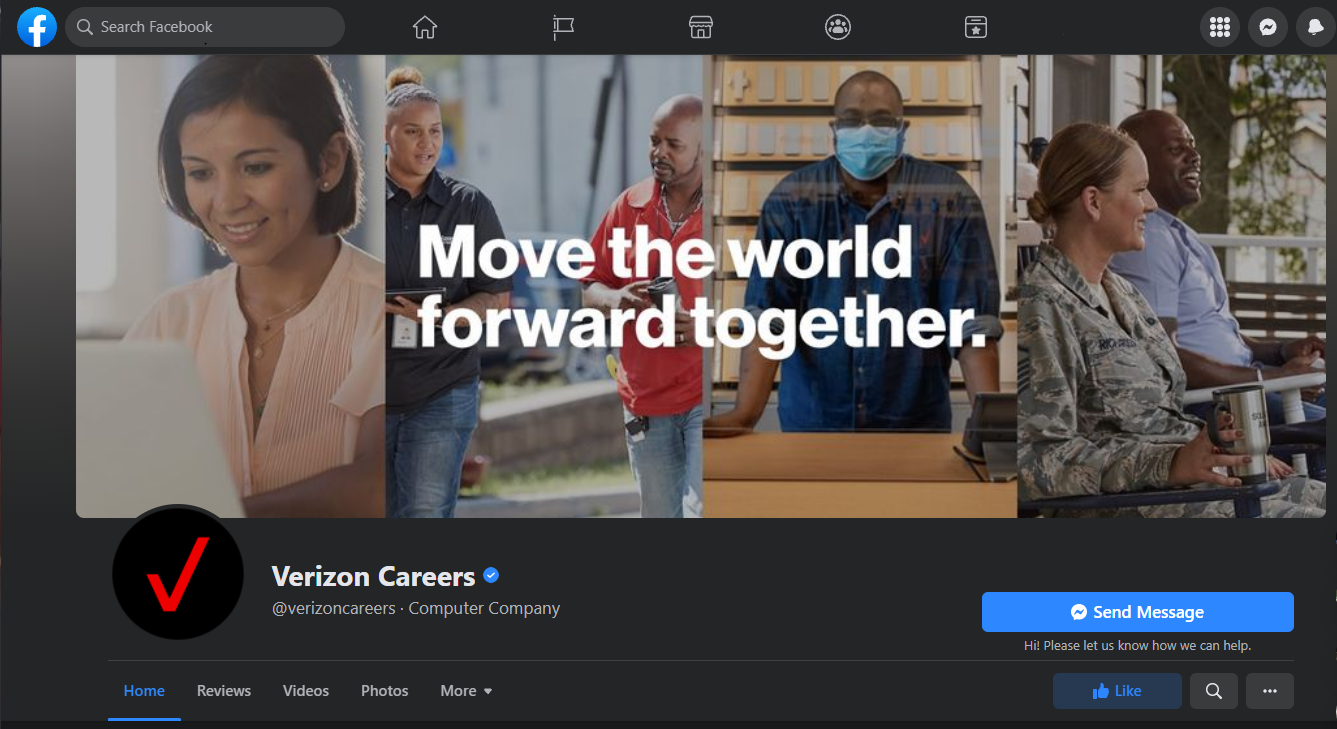
Verizon is one of many companies joining a growing trend on Facebook. Dedicated career pages such as Verizon Careers take advantage of Facebook’s page management tools to post jobs and share information about their company culture. Facebook pages include areas for reviews, photos, videos and more which Verizon makes the most of for its audience of 218,000.
3. Zappos
https://twitter.com/InsideZappos/status/1311112153580154880
Taking a slightly different approach, Zappos turned heads with a strictly social approach to recruiting in 2014. The shoe company launched dedicated accounts on Twitter, Facebook, Instagram and YouTube under the name “Inside Zappos” with the goal of sharing company culture, information, news, events and open positions with prospective employees.
The move was better suited to some platforms than others. While Inside Zappos is still active on Twitter and Facebook, the YouTube channel eventually migrated back to Zappos’ main YouTube account, and Inside Zappos’ last Instagram post was in 2018.
4. Disney
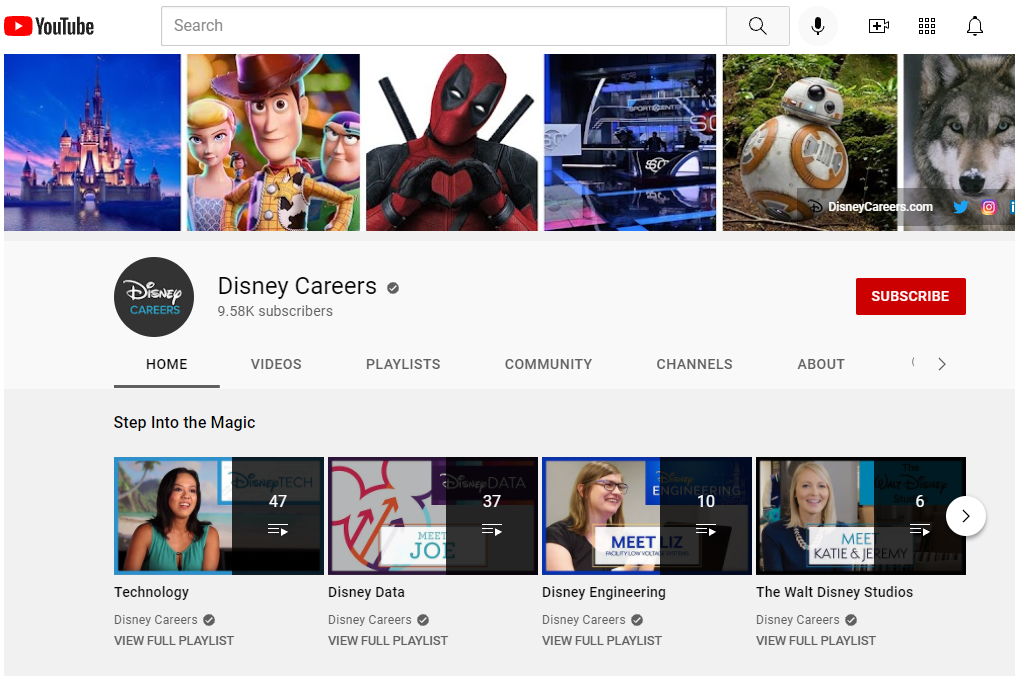
Making the most of its video content, film giant Disney has perhaps unsurprisingly dedicated an entire YouTube channel to their career opportunities and boasts over 9.5k subscribers. The Disney Careers channel uses video collections to describe positions in technology, engineering, “Imagineering” and more. This is an excellent example of a brand playing to its strengths with recruiting.
5. Cactus Club Cafe
@cactusclubcafeCoffee breaks on the HQ rooftop ☕️ 👏🏼 #cactusclubcafe #lifeatcactus #joblove #handchallenge #handclapchallenge #fyp
♬ Hands Clapping ' 😈89😈






